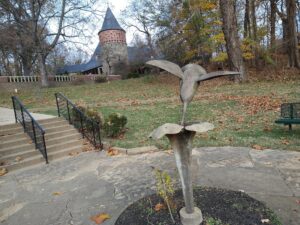 I grew up in Henderson, Kentucky, but knew very little about John James Audubon State Park in my time there. I went to its picnic shelters every summer for family reunions, church socials and class parties. I swam in the lake a couple of times. I went with my elementary school class to what was then a small museum space that didn’t have much in it. My parents would say that the park was built by the Civilian Conservation Corps and what a great program the CCC was, but I didn’t really understand what they meant. To me, in the 1980s, the park was the place with lots of picnic shelters, with a lake to swim in, with the museum that, from the outside, looked like a beautiful fairy tale castle, and with a carriage house or something nearby that was never open except for the bathrooms. And a golf course I had never seen (and still haven’t). It was nice… but not anything I ever recommended as a must-see place to visit.
I grew up in Henderson, Kentucky, but knew very little about John James Audubon State Park in my time there. I went to its picnic shelters every summer for family reunions, church socials and class parties. I swam in the lake a couple of times. I went with my elementary school class to what was then a small museum space that didn’t have much in it. My parents would say that the park was built by the Civilian Conservation Corps and what a great program the CCC was, but I didn’t really understand what they meant. To me, in the 1980s, the park was the place with lots of picnic shelters, with a lake to swim in, with the museum that, from the outside, looked like a beautiful fairy tale castle, and with a carriage house or something nearby that was never open except for the bathrooms. And a golf course I had never seen (and still haven’t). It was nice… but not anything I ever recommended as a must-see place to visit.
Here we are almost 40 years later and the park has been transformed into a wonderful destination and celebration of both the work of the CCC and conservationists, with a kick-your-butt back country trail and access to a lake that I only heard about as a kid (back then, I don’t think there was an open trail to it). The cabins are beautiful and I believe they are open for rentals year-round. The main lake no longer has swimming, having been restored to make it more wildlife-friendly, but I believe you can take a kayak out on it.
The museum space inside is GREATLY expanded with artifacts and information from the life of John James Audubon and why his work led to the creation of Audubon societies all over the world. There’s also regular presentations inside about the importance of wildlife conservation and the wildlife of the area. That always-closed carriage house – actually, the Tea House – is now open and serves as the park’s office (and it’s totally worth it to visit – the woodwork is gorgeous). And events (hikes, presentations, workshops, art fetivals and more) abound – you need to follow the park on Facebook to be able to keep up.
The trails are amazing. There’s over six miles of trails, and some will have your calves screaming because of the inclines. We didn’t get to do the expanded trails along the river, which you access outside the park on Warbler Road, next to the Ohio River, but we did do the backcountry trail and I’m still hurting from it.
The trails do NOT allow dogs except for one, near the campground. But you can take your dog on all of the roads through the park, and that’s a few miles of terrific, scenic exercise. Wish they had trails along the roads to make it safer for walking along them.
The park now has reminders about the CCC everywhere: a statue, a couple of plaques, mentions in the museum, and more. My parents’ mentions of the CCC have stuck with me all the years and, after studying the CCC in high school and at my university, I became a CCC fan girl: when I travel, I immediately notice CCC-built structures in parks and public spaces, and make a point of visiting any that might be nearby as I travel. I have a photo album tribute to the CCC, noting all of the CCC-built places I’ve been and memorabilia I’ve come across.
We went to the park over two days: the first just to hike, and the second, to spend time in the museum. If you go, be sure to take some snacks and water – there’s no restaurant in the park.
The park is easy to turn into if you are coming from Henderson, but REALLY difficult to turn into if you are coming from Evansville, Indiana. Please be really, really cautious when turning in and out of the park onto Highway 41.
With all that said, I do have some criticisms of the park. Here is an email I sent to the park manager, the head of Kentucky State Parks, and the Friends of Audubon State Park group after my November 2023 visit:
I visited John James Audubon State Park during my Thanksgiving holiday in Kentucky. I haven’t been there since I was a teen – more than 40 years ago. The vastly expanded museum and hiking trails, the restored lake, the quality of the groundskeeping – it was amazing. I was particularly pleased to see so much information about and tributes to the Civilian Conservation Corps – that is a legacy I always knew, because of the park and because my father always noted it when I was growing up. I have followed the park on Facebook for years and knew the park now regularly had events – guided hikes, science talks, workshops for kids – but being onsite and seeing everything for myself, firsthand, really brought home what a treasure the park is now. Kudos to everyone who has, over many years, made this possible. Well done.
However, there are some things I feel compelled to note that need to be addressed urgently.
One thing that should be simple to fix: please put closed captioning on your films on rotation in your theater. This is a very easy fix, something anyone with video editing software could do for you. I bet there are students or faculty at area universities and colleges that would be happy to make this happen for you on a volunteer basis. This would help both the hearing impaired and people who are not native English speakers to better experience the films.
I was deeply disturbed by the lack of focus – even mention – in the museum that John James Audubon enslaved people and that he dismissed and belittled the abolitionist movement. When the Audubon family lived in Henderson, Kentucky, they had enslaved people working for them in their household, and they bought and sold enslaved people. Think of the families they broke up. Think of the lives they destroyed. This is all well documented on this web page of the National Audubon Society’s own web site:
https://www.audubon.org/news/the-myth-john-james-audubon
Why not reproduce this web page on a series of display boards and put these up in the museum? Why not be open and honest and transparent on the very dark side of this man? You don’t have to answer this question – was he a good man who did something horrific or was he a bad man who did something good? – but welcome the discussion! The answer, either way, could lead to a lot of self-examination by visitors.
The other very large hole in all that’s wonderful about the park is the lack of prominent acknowledgment of the people settled in the area long before European Americans came: no statue, no information board, no anything that I could find. That’s as shameful as not acknowledging Audubon’s enslavement of people and his defense of slavery.
I hope that all of this is being addressed already by funders and supporters of John James Audubon State Park. In fact, if there is a fundraising campaign to make any of this happen, let me know: I’ll donate to it and publicize it.
Here is the response I got. I’m pleased about the revamp, but wish, in the interim, they would just print out the web page I mentioned, as a couple of large signs, and just put them on some easels.
Dear Ms. Cravens,
I wanted to express my gratitude for your visit to Audubon State Park during the holiday. I’m delighted that you had the opportunity to enjoy our park’s trails and grounds. I will be sure to share your kind words with our grounds team. It is a priority for us to preserve and convey the unique history of the park, particularly our association with the Civilian Conservation Corps.
Thank you as well for suggesting the addition of closed captioning to our videos. I believe this is an excellent idea and being personally aware of the challenges faced by individuals with hearing impairments, I fully understand the importance of such accommodations.
I wanted to inform you that the Kentucky Department of Parks is currently working on the design for a comprehensive restoration of the Audubon Museum building. As part of this restoration, we intend to revamp the museum layout, install new display cases, and incorporate significant information and scholarly works pertaining to the entire life of John James Audubon. It is essential for us to not only celebrate Audubon’s contributions to natural history and bird depictions but also acknowledge and comprehend his history as an enslaver and anti-abolitionist.
While our collection of indigenous art and artifacts is limited, we are continuously searching for items that will enrich our understanding of the area’s history. Our objective is to present a comprehensive history to our guests, allowing them to interpret the information in their own way.
Once again, thank you for sharing your ideas and concerns with us.
Best regards,
David Miller
Park Manager
John James Audubon State Park

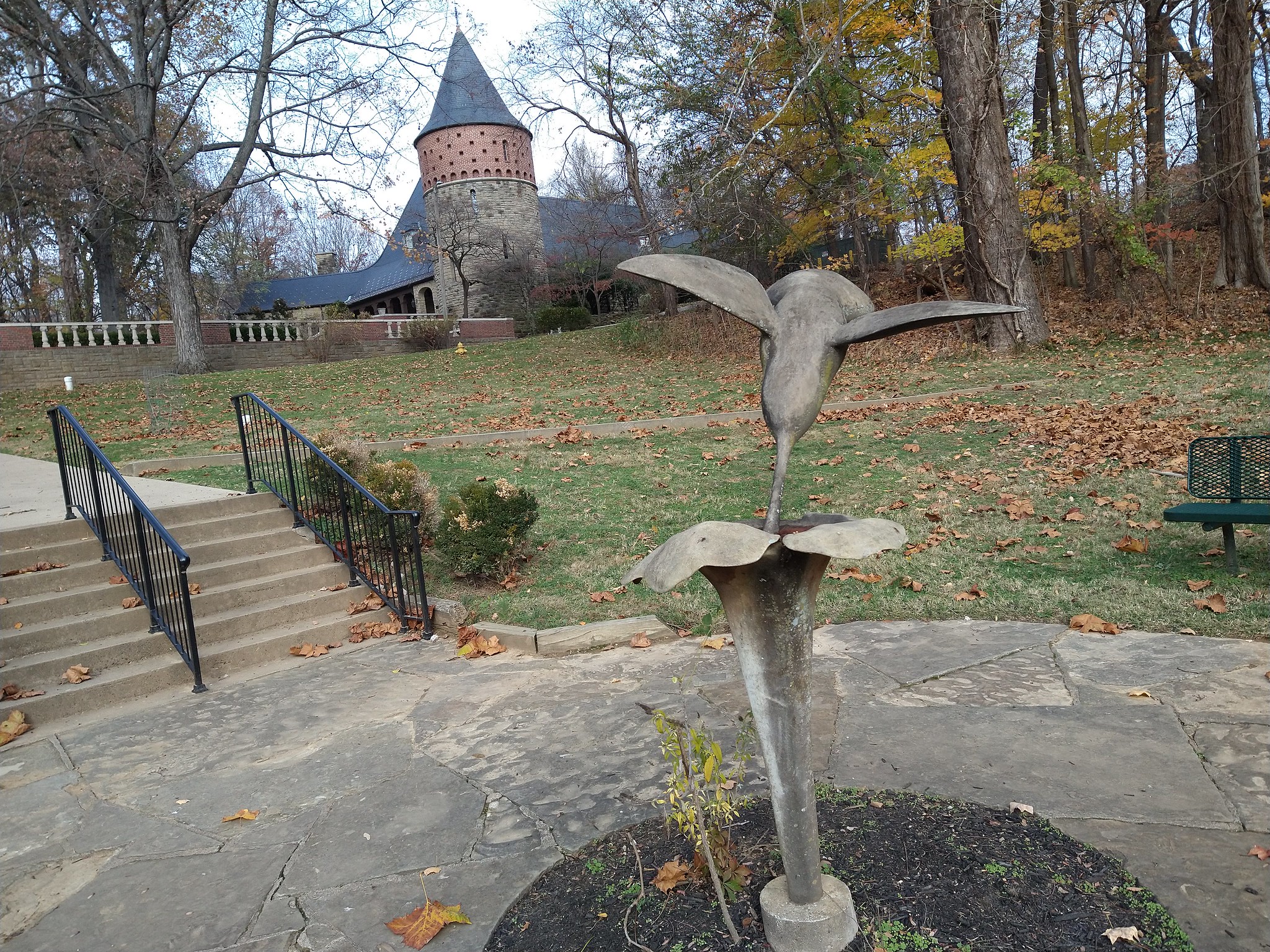


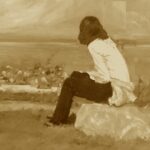


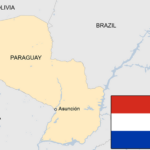
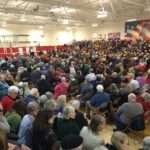




Leave a Reply